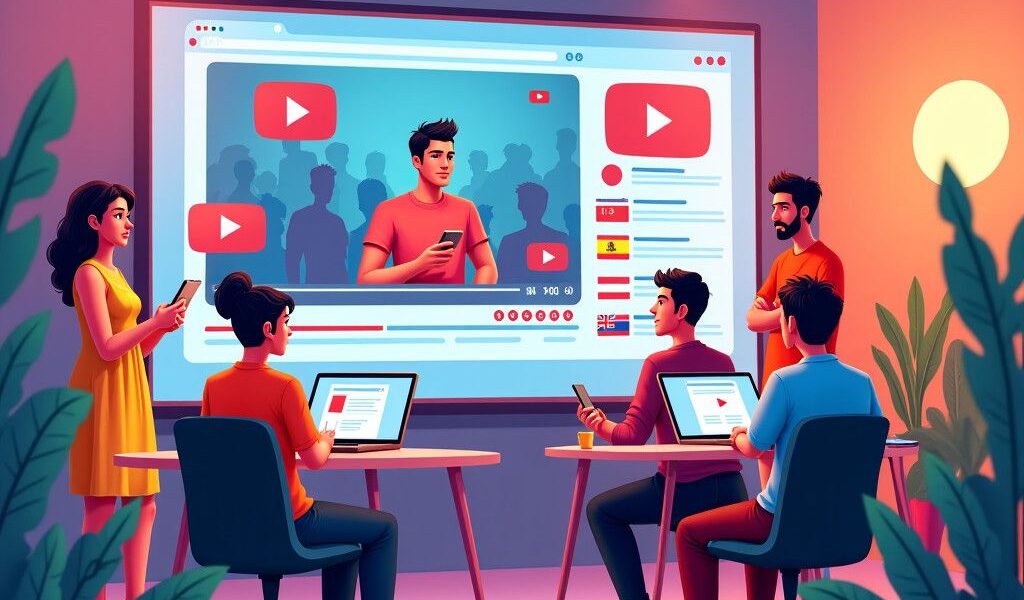In a significant move set to impact content creators and consumers globally, YouTube is expanding its auto-dubbing feature to allow video creators to reach broader audiences by translating their content into multiple languages. This functionality not only enhances accessibility but also addresses the increasing demand for multilingual content in today’s interconnected world.
What is Auto-Dubbing?
Auto-dubbing is a technology that uses machine learning to translate and vocalize spoken content in videos. Creators can generate audio in different languages without the need for professional voice actors or extensive editing. This feature is particularly advantageous for creators looking to expand their audience base in non-English speaking regions.
Why Is This Important?
The significance of this feature lies in the changing landscape of content consumption. With an estimated 1.5 billion people worldwide communicating in English, the potential for reaching audiences who speak different languages often gets overlooked. By integrating auto-dubbing, YouTube empowers content creators to bridge language barriers, thereby increasing their viewer count and engagement rates.
For example, consider a cooking channel that usually draws in viewers from English-speaking countries. By adding auto-dubbing options in Spanish, French, and Mandarin, the channel can effortlessly appeal to a far larger audience, tapping into markets that may not have been accessible before. This not only boosts the channel’s visibility but can potentially lead to a substantial increase in revenue through ad monetization.
The Role of SEO in Multilingual Content
When creating content that caters to diverse linguistic groups, understanding the principles of SEO becomes crucial. Translating video titles, descriptions, and tags into the target languages is as important as the audio translation itself. This ensures that the content remains discoverable through search engines in various languages.
For instance, adapting the title of a video from “Easy Pancake Recipe” to “Receta Fácil de Panqueques” in Spanish not only makes it more accessible but increases its searchability within Spanish-speaking search queries. Employing keywords that are popular in the target language can significantly improve the video’s reach.
Enhancing Conversion Rates with Multilingual Content
With platforms like YouTube prioritizing multilingual content, creators can leverage this feature to enhance their conversion rates. When viewers see content available in their native language, they are much more likely to engage. This engagement translates into higher subscription rates, increased watch time, and ultimately better ad revenue.
A compelling case study can be found in the realm of educational content. A channel focused on language learning can benefit immensely from auto-dubbing. By translating their videos into multiple languages, they can cater to learners around the world, offering resources that previously were only available in English.
Challenges Associated with Auto-Dubbing
While auto-dubbing opens numerous doors, it is important to remain aware of its limitations. The finesse of human voice inflections, cultural nuances, and local dialects often can’t be precisely captured by AI. Creators may need to supplement auto-dubbing with human oversight, especially for sensitive topics or complex content.
Moreover, the calibration of voice tone and pacing in translation may also require adjustment. An auto-dubbed video may sound robotic or fail to resonate emotionally with viewers. Therefore, striking a balance between relying on technology and adding a personal touch is paramount.
Future Prospects
As machine learning continues to advance at a rapid pace, the quality of auto-dubbing is expected to improve. YouTube’s investment in this technology signals a commitment to making its platform more inclusive and adaptive. It positions itself as not merely a video hosting site but as a leader in evolving digital content standards.
As these features become more prevalent, creators must remain vigilant, ensuring the quality of content does not suffer. Engaging audiences with authentic, relatable, and culturally relevant material is critical for sustaining interest and building loyalty.
Conclusion
YouTube’s expansion of auto-dubbing reflects a significant shift toward more inclusive content creation. This feature not only serves to widen the reach of creators but also demonstrates an understanding of the diverse needs of global audiences. By leveraging this technology wisely, content creators can enhance their visibility and engagement, paving the way for new possibilities in digital marketing and e-commerce.
In this fast-paced digital age, keeping an eye on emerging trends and technologies makes all the difference. As auto-dubbing takes center stage, the advantage lies in those who can swiftly adapt and innovate.












